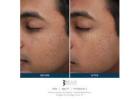Choose "Make this ad premium" at checkout.
Vestibular Exercises for Vestibular Nystagmus: A Comprehensive Approach Spruce Grove
- Location: Spruce Grove, Spruce Grove, Alberta
Vestibular nystagmus, characterized by involuntary eye movements, can significantly impact daily life, causing symptoms such as dizziness, imbalance, and visual disturbances. This condition is often caused by issues with the inner ear or brain that affect the vestibular system—the body’s balance control center. At Sunrise Physical Therapy, specialized Vestibular physiotherapy Spruce Grove provides an effective treatment approach to manage and alleviate symptoms of vestibular nystagmus. This article outlines the role of vestibular exercises in treating nystagmus and how they can improve the quality of life for those affected.
Understanding Vestibular Nystagmus
Vestibular nystagmus occurs when there is an abnormal reflex movement of the eyes in response to stimuli that affect balance and spatial orientation. It can be caused by a variety of factors, including inner ear disorders (like benign paroxysmal positional vertigo or vestibular neuritis), brain injuries, migraines, and neurological conditions. The result is often blurred vision, difficulty focusing, and feelings of dizziness or vertigo.
The Role of Vestibular Exercises in Treatment
Comprehensive Assessment: The journey to effective treatment begins with a detailed assessment at Sunrise Physical Therapy. A specialized physiotherapist will perform a series of tests to evaluate eye movements, balance, and coordination. This assessment helps in identifying the specific type of vestibular nystagmus and understanding how it affects daily activities. The therapist will also review the patient’s medical history to identify any potential underlying conditions contributing to the symptoms.
Gaze Stabilization Exercises: One of the primary goals in treating vestibular nystagmus is to improve gaze stability. Gaze stabilization exercises focus on helping the eyes track a moving object without causing dizziness or eye strain. At Sunrise Physical Therapy, these exercises are customized to the individual’s needs, often incorporating slow, controlled head movements while following a visual target. These exercises help to train the brain to filter out the involuntary eye movements and stabilize vision.
Adaptation Exercises: For individuals with vestibular nystagmus, adaptation exercises play a critical role in retraining the brain to process sensory input correctly. These exercises involve activities that challenge the vestibular system, such as head turns or movements while focusing on a visual target. The goal is to help the brain become accustomed to the abnormal signals from the inner ear, thereby reducing the intensity and frequency of nystagmus. Sunrise Physical Therapy uses controlled exposure to movements that replicate everyday activities to enhance this process.
Balance Training: Improving balance is essential for managing vestibular nystagmus, as it helps prevent falls and increases overall stability. Sunrise Physical Therapy designs balance training exercises that incorporate a variety of movements, including standing on one foot, walking in a straight line, or using balance boards. These exercises challenge the vestibular system to adapt to different postures and environments, strengthening the muscles and reflexes involved in maintaining balance.
Habituation Exercises: Habituation exercises are used to reduce sensitivity to specific movements or stimuli that trigger symptoms of nystagmus. These exercises involve repeatedly exposing the individual to movements or situations that cause dizziness in a controlled manner. Over time, this helps the brain to become desensitized, reducing the severity of symptoms. At Sunrise Physical Therapy, these exercises are tailored to the specific triggers of each patient, allowing for a gradual increase in activity without exacerbating symptoms.
Customized Home Programs: In addition to in-clinic exercises, patients at Sunrise Physical Therapy are often provided with a customized home exercise program. This program includes specific vestibular exercises and routines designed to complement in-clinic treatments. Regular practice at home is essential for reinforcing the gains made in therapy and ensuring that the vestibular system continues to improve outside of the clinic setting. The therapists at Sunrise Physical Therapy guide patients on how to integrate these exercises into their daily routines effectively.
Get Started with Your Vestibular Therapy Today
If you or someone you know is experiencing symptoms of vestibular nystagmus, reach out to Sunrise Physical Therapy in Spruce Grove. Their team of specialized physiotherapists is ready to create a customized treatment plan to help manage symptoms and improve quality of life.
#vestibularphysiotherapysprucegrove #balancerestored #vestibularphysiotherapy #vestibularphysiotherapynearme #vestibularphysiotherapy #physiotherapynearme #physiotherapysprucegrove #physicaltherapynearme #physicaltherapy #sunrisephysicaltherapy






Useful information
- Avoid scams by acting locally or paying with PayPal
- Never pay with Western Union, Moneygram or other anonymous payment services
- Don't buy or sell outside of your country. Don't accept cashier cheques from outside your country
- This site is never involved in any transaction, and does not handle payments, shipping, guarantee transactions, provide escrow services, or offer "buyer protection" or "seller certification"
Related listings
-
 Oplev Danmarks bedste akupunkturHealth - Beauty - Fitness - - February 18, 2025
Oplev Danmarks bedste akupunkturHealth - Beauty - Fitness - - February 18, 2025Leder du efter lindring, balance eller wellness? Vores team af højt dygtige og godkendte akupunktører er her for at hjælpe. Som nogle af de bedste i Danmark, er vi dedikerede til at yde personlig pleje skræddersyet til dine ...
-
 Skin Health DenverHealth - Beauty - Fitness - Denver (Colorado) - February 17, 2025
Skin Health DenverHealth - Beauty - Fitness - Denver (Colorado) - February 17, 2025If you are in search of the best and most affordable Skin Health services in Denver, look no further than Skin! Medical Aesthetics. We provide personalized and effective treatments to help you achieve your skincare goals. Contact Us:- Phone:72...
-
 Rehabilitation Center in MumbaiHealth - Beauty - Fitness - Mumbai (Maharashtra) - February 15, 2025
Rehabilitation Center in MumbaiHealth - Beauty - Fitness - Mumbai (Maharashtra) - February 15, 2025The I Care Foundation i.e., Alcohol and Drug Rehabilitation Center in Mumbai, was established for the treatment of the end numbers of the addiction problems, as well as the people who are severely addicted to many of the harmful substances that are f...

